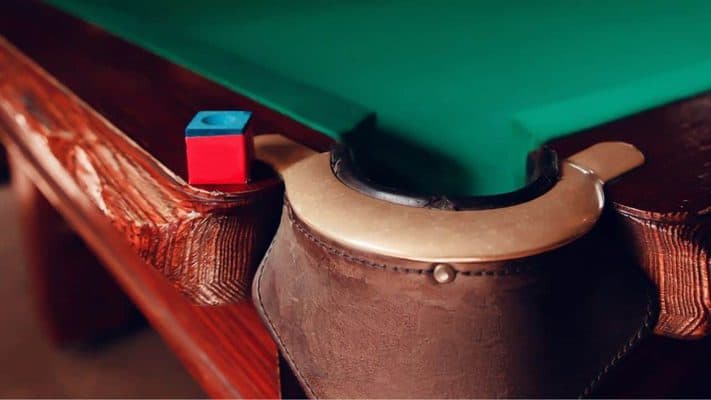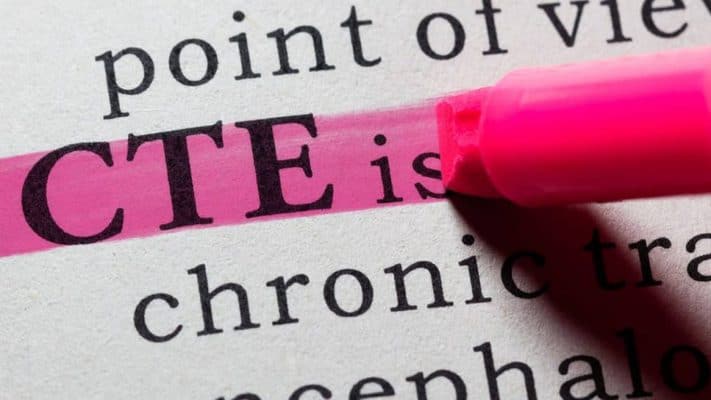There is a school of thought in pool or snooker that says that if you can’t hit the center of the cue ball consistently you should work on your stroke. You should make sure that you are delivering the cue in a straight line and if not, make adjustments accordingly.
I was told by several billiard coaches that I had a “stroke fault” and that I should work on it until it was fixed. My problem was that I was cueing off center. More to the point I was aiming in the center, cueing at the center but always striking and following through to the left side of the center axis.
So I was putting left hand side on the white ball. On every shot.
Sometimes it would be running and sometimes check. But it happened on all shots regardless of power, on stun shots, stop shots, backspin or top spin. The longer my backswing was the further my tip moved to the left. However, it was only a maximum of 1/2 a tip to the left.
Working on my stroke might work, but do I want to spend hours trying to hit the cue ball on the vertical axis every day for months until I can’t get the stroke wrong?
Why this is a Huge Problem for Pool Players
Let’s look at why the failure to find center ball is such a big problem. Striking the cue ball off center changes the path of the cue ball and makes getting shape on the next ball unpredictable.
Putting left hand side on the cue ball with a right cut is okay because he just goes on as a touch of outside or helping side. However, putting it on the left hand side on left cuts is the same as putting check side on every shot where the cut is to the left.
The problem with this is that a touch of inside spin is for more difficult to control than a touch of outside spin. Especially when you are not expecting it or have not made an allowance for the spin.
So the problem over the years has been that I never actually knew that I was hitting the white ball off dead center.
Controlling the Cue Ball is Easier When You Hit Center Ball
I think that we would all agree that the ability to strike the cue-ball in the center would be an advantage when learning to play position on the next ball.
I would definitely say that learning the natural cue ball path is easier with a center ball strike. This is because the center is only in one place and gives a pretty standard reaction from the object ball.
In contrast, the path changes with each degree of spin applied to either side of the center axis. Spin makes learning the cue ball direction possible but much more subjective.
So how does a player learn where the white is going?
By observing the path that the white ball takes after contact with the object ball of course. There is no other way to learn the path than playing or watching someone else play. This information is learned over many months and possibly years of experience.
Time to Introduce the Second Problem.
How can I learn where the white actually goes after contact if I never hit the ball in the center. I thought that the cue ball paths that I had learned were the result of a good hit.
No one has a clue if they don’t learn where the white goes naturally following a center ball contact.
I know where the white travels after contact with the object ball when I apply running or check side and I know how to make the necessary adjustments. But where does the cue ball go when struck in the center?
For Me, Making an Adjustment To My Aim is Better than Fixing my Stroke?
So if we can’t hit the ball in the center it’s pretty safe to say that most players are either putting too much right spin or too much left spin on a ball without knowing about it which is why when you talk to most people they tend to prefer shots on one side of the table to the other.
So if you notice this then the question then is:
Do you try to fix your stroke?
or
Do you just make a small allowance for the fault?
Well, let me say this, if you’ve been playing 20 or 30 years your stroke is grooved in that’s the only way you’ll ever be able to do it and you’ll always go back to doing it that way.
So at the moment, I’m having to go through a system to relearn where the white goes after it hits the rail with a touch of outside English.
I’m making sure that whenever I’m cutting to the left hand side, so I’m standing on the yellow side of the table looking at the black ball cut into the left hand pocket, I’ve got right hand side on the white , a very small amount of outside or right hand side whatever you want to call it.
The difference between putting right outside and left inside is immense because when you put a small amount of right hand side on the ball the deflection and the throw cancel each other out. However, when I hit the ball on the left hand side with the left hand cut the two factors work together to make the shot less predictable. Deflection to the left increases the amount of throw and makes the shot very speed sensitive.
What Is My Goal?
My only goal is to avoid applying inside English to shots by accident.
I am doing this by making sure that my tip is always to the outside of center on all center ball shots.
A Touch of Outside (Helping Side.)
This is the complete opposite to touch of inside which is an “aiming system.” It’s not really an aiming system but it’s a way of approaching the cue ball. and my way is to actually put on a small amount of outside English be that left or right as we used to do in the in the snooker game.
The story behind this, whether you agree with it or not, is that it is very very difficult to hit the ball consistently in a middle. Players can spend their whole playing career trying to find the center.
The reason for this is that the center of a sphere on a pool ball or a snooker ball is a very small area. It is actually an imaginary line from the apex of the ball to where the line touches the cloth. add to that the fact that you are trying to hit this line with a 10mm or 13 mm tip.
Obviously it goes without saying, if you hit it slightly off to one side, even if its half a millimeter, or even a few thousandths of an inch, it really doesn’t matter how exact you get. Any contact between 2 spheres away from the center axis will cause a rotation of the cue ball in that direction.
What About Contact Induced Throw (CIT)
Small amounts of English or side depending on whether you’re playing snooker or pool come with CIT which is collision induced throw and deflection of the cue shaft which pushes the cue ball in the opposite direction.
Allowing for Collision induced throw and deflection takes a lot of getting used to, but they’re even harder to cope with if you’re not aware that you’re putting spin on the ball.
And that is the problem!
You could spend the rest of your life trying to change/straighten out your cue action without seeing any measurable success.
But, changing my aim by a couple of mm to the left or right side of the center can be easily achieved in a few days of practice. The idea is to put a small amount of running/outside spin on every shot making a small adjustment to ensure that you definitely hit the predicted side of the ball.
When I say a small amount I am talking about perhaps a ¼ of a tip from the center axis of the cue ball, maybe 2 mm or less.
This should be enough to prevent using inside English by accident.
Shot Example
For example, if you are playing a center ball high black off the spot, from the yellow side of the table into the left corner pocket, striking the white left of center by accident may cause a missed shot. However, striking the white in the center or just to the right will likely make the ball.
These are problem shots that come up nine ball all day long and every now and then I would miss one for no apparent reason. It was just a matter of time before I dogged the same shot again.
Confidence is Everything
This is not a great situation for building confidence over a long period of time. I know the shot, I know the tip position but that’s not where I am striking the ball
Frequently Asked Questions (FAQs)
Q: What is the importance of striking the cue ball center?
A: Striking the cue ball center is important because it allows for accurate and controlled shots. When you hit the center of the cue ball, it minimizes unwanted spin and deflection, resulting in a more predictable path for the ball.
Q: How do I find the center of the cue ball?
A: To find the center of the cue ball, start by visualizing a vertical axis running through the center of the ball. This axis is the line that separates the top and bottom halves of the ball.
Q: What is the tangent line?
A: The tangent line is an imaginary line that runs perpendicular to the object ball at the point of contact with the cue ball. It represents the direction in which the cue ball will travel after the shot.
Q: How does striking the cue ball off center affect the shot?
A: When you strike the cue ball off center, it causes the cue ball to spin, which can influence its path. Depending on the amount and direction of the spin, the cue ball may curve or swerve off the tangent line.
Q: What is a stun shot?
A: A stun shot is a type of shot where the cue ball is struck near the center, causing it to stop or stun at the point of contact with the object ball. This shot minimizes cue ball movement and allows for precise position play.
Q: What is a stop shot?
A: A stop shot is similar to a stun shot, where the cue ball is struck near the center, resulting in the cue ball stopping or barely moving after impact with the object ball. It is commonly used to control the cue ball’s position for the next shot.
Q: How does the cue tip affect the shot?
A: The cue tip is the part of the cue stick that comes into contact with the cue ball. The type of tip and its condition can influence the amount of grip and spin on the cue ball, ultimately affecting the cue ball’s path and behavior.
Q: What are the horizontal and vertical axis of the cue ball?
A: The horizontal axis of the cue ball is an imaginary line that runs from left to right across the center of the ball. The vertical axis of the cue ball is an ima



